
AI-powered delivery date estimates to boost conversion
Give shoppers peace of mind and protect and grow your bottom line
Personalized tracking experiences to build brand loyalty
Returns and exchanges management to mitigate fraud and reward best customers
Proactive communication to drive customer lifetime value
Delivery claim management to tackle fraud and build trust
The Best Retail Chatbots

For retailers, chatbots have become a new channel for innovation and customer engagement. Chatbot usage is on the rise: in a recent survey, 29% of online shoppers said that they use or plan to use chatbots to shop online. And only 14% of online shoppers said that they don’t like chatbots at all, down from 35% a year ago.
As conversational commerce becomes more popular, chatbots are expanding into fresh formats. Retailers are using bots to power voice-activated shopping as more customers choose to research products and make purchases with their voice-activated devices.
There was a 41% increase in the number of people using their voice-activated devices to shop over a six-month period earlier this year. The best retail chatbots combine what customers need, like package tracking and customer service, with what customers want, like style inspiration and personal shopping assistance.
These chatbots build customer loyalty and foster customer delight by providing a whole new way to explore retail brands. And as more retailers experiment with chatbots, they’ll continue to become an essential part of ecommerce strategy. Here are eight retail chatbots working hard to improve customer experience.
Sephora
Sephora’s chatbots not only help customers find relevant products—they also teach customers how to use them. And with chatbots on multiple channels, each bot offers slightly different ways to engage with the brand.
Their Kik chatbot provides tutorials based on the user’s makeup style, their Facebook Messenger chatbot lets users try different looks using a camera filter, and their Google Assistant bot allows customers to book services and use voice-activated shopping. Sephora’s chatbots expand product knowledge for experts and newbies alike.
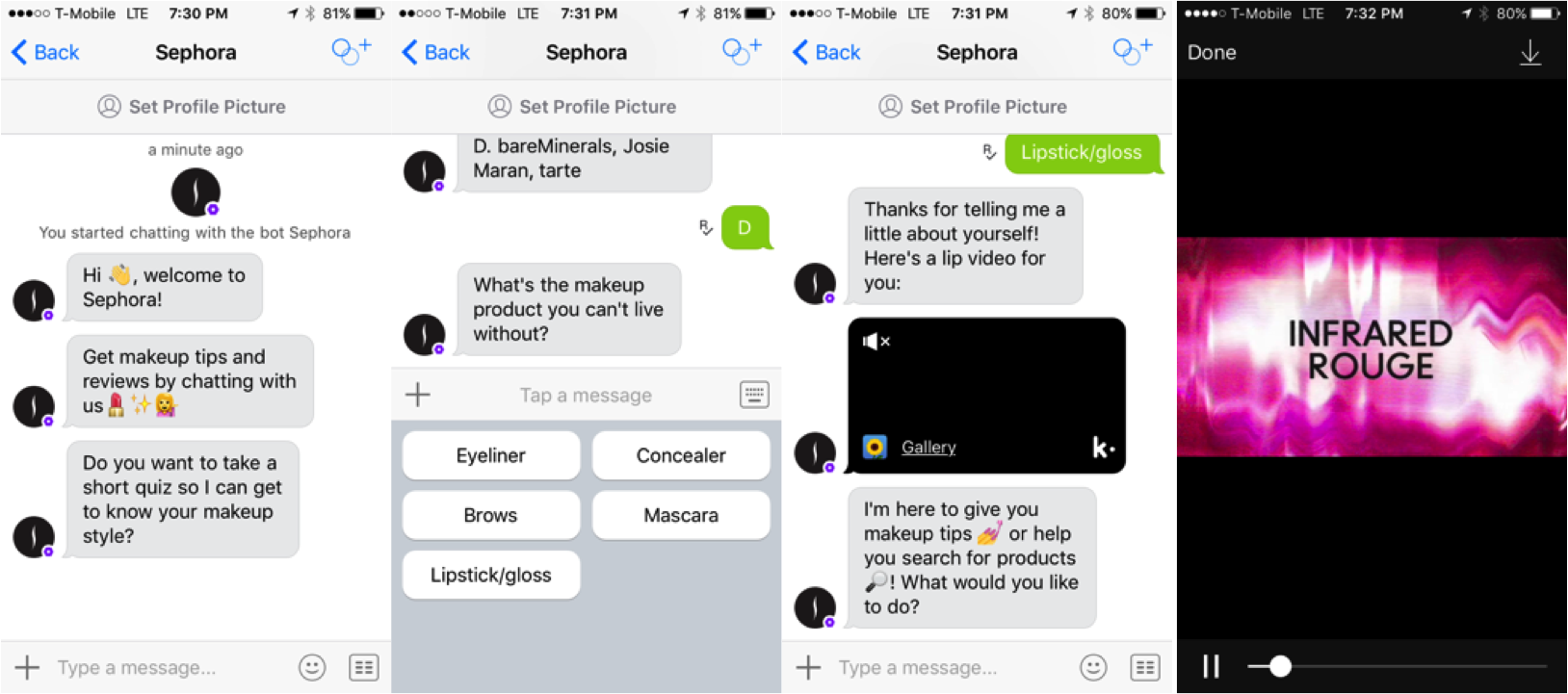
HelloAva
With so many skincare options available, it can be confusing for shoppers to understand exactly what their skin needs. Enter HelloAva, an ecommerce site that centers its business model on chatbot-powered skincare makeovers.
Ava the chatbot asks shoppers to answer 12 questions and snap a photo of their face. The AI-powered bot then delves into its database for data-driven skincare recommendations. The idea is that if a product worked for 10 other people with similar skin, it will probably work for someone else with that skin type as well. The AI improves as more customers use Ava, but the results are already promising and point to a world in which more customers utilize data and artificial intelligence to improve their shopping experiences.
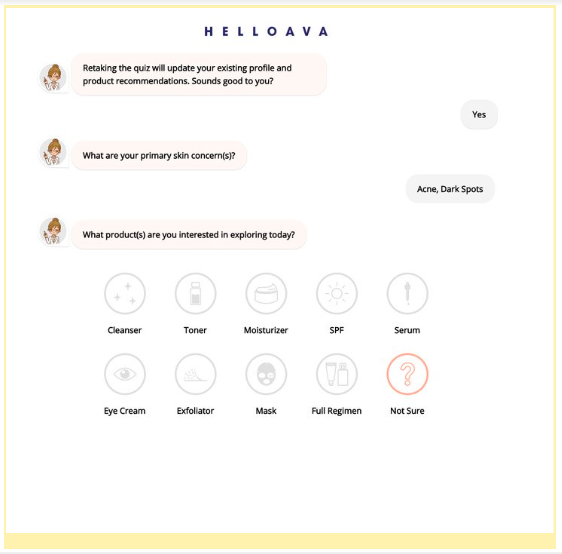
ASOS
ASOS’s chatbot is a fashion-lover’s dream. It turns any photo or screenshot into shopping and style inspiration. Users send Enki the chatbot a picture and set a budget, and Enki will provide recommended outfits that they can shop.
The ASOS app has offered a visual search option for some time, but with Enki, the experience is far more interactive. Enki feels more like a personal shopping assistant by actively searching for items on customers’ behalf and sending weekly suggestions.
With 70 percent of ASOS’s U.K. sales coming from a mobile device, Enki is a smart move for the retailer. And as of October 2018, Enki is also available via Google Assistant, giving shoppers a hands-free way to explore ASOS’s 85,000 products.
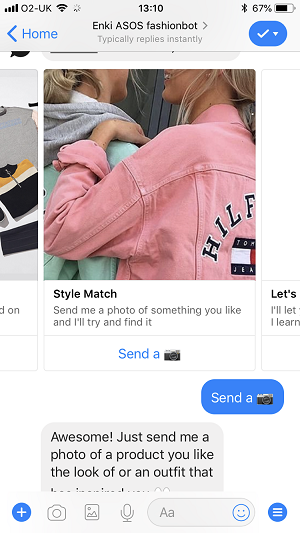
H&M
H&M’s Kik chatbot presents users with different outfit photos to choose from to help narrow down style choices. Users tell the chatbot whether they prefer the button down or the hoodie, the outfit with bright colors or the one with neutrals.
From there, users can piece together outfits from product recommendations. And, even better, they can tap into user-generated content by allowing users to share their own outfit styles, which helps foster a community around the products. Users get to show off their personal style and discover new products they wouldn’t have considered otherwise.
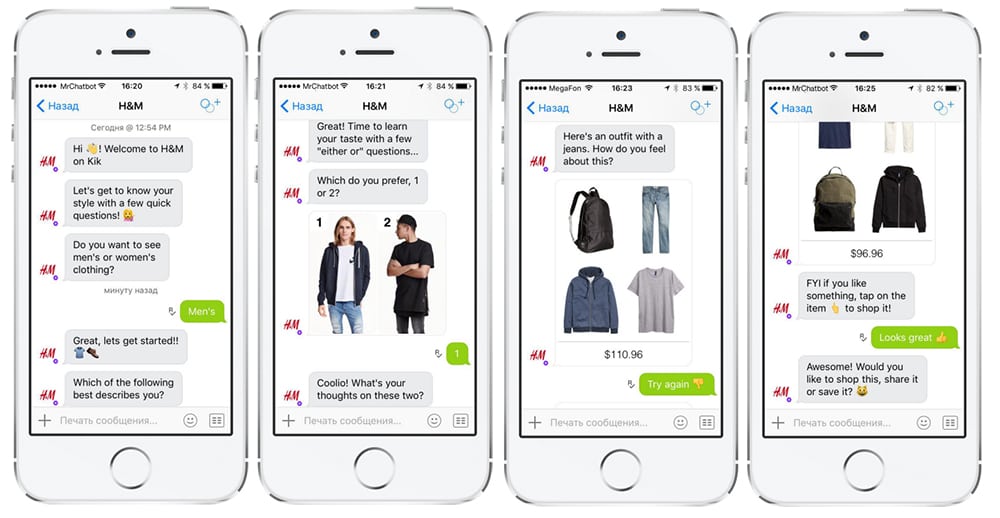
Burberry
Originally launched for London Fashion Week in 2016, Burberry’s Facebook Messenger gives Burberry’s luxury shoppers a personalized way to connect with their brand. Customers can specify the types of products they're interested in—scarves, for example —and the bot will serve up suggestions of products from the current collection. Users can also watch recent runway shows and browse other content from the digitally forward brand within Messenger.
Burberry also goes a step further by using its bot to send push notifications, inviting fans to explore gifts and pre-order hot new items.
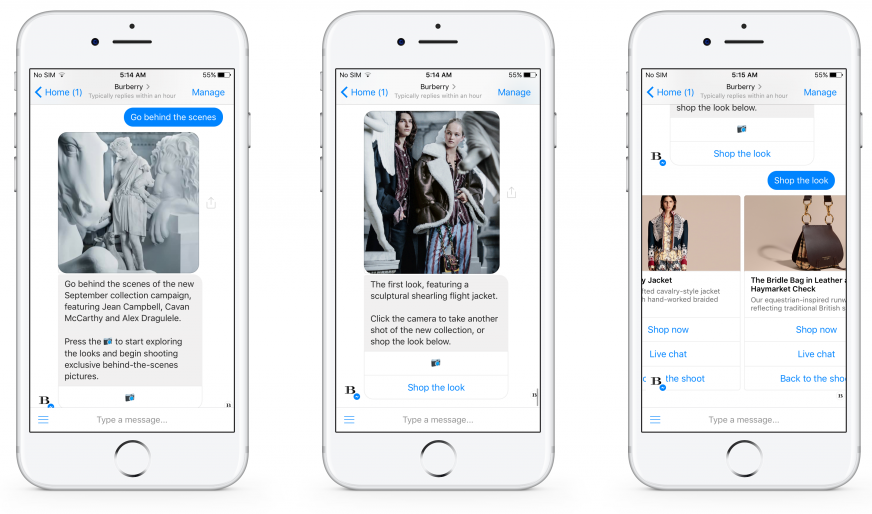
Walmart
Earlier this year, Walmart launched Jetblack, a members-only personal shopping and concierge service. The service is aimed at helping busy moms shop via text with a virtual personal assistant.
Jetblack is currently only available in Brooklyn and Manhattan, with plans to roll it out in other areas soon. But even in its early stages, it’s poised to set the stage for a new era of SMS-based chatbots built around customer convenience and happiness.
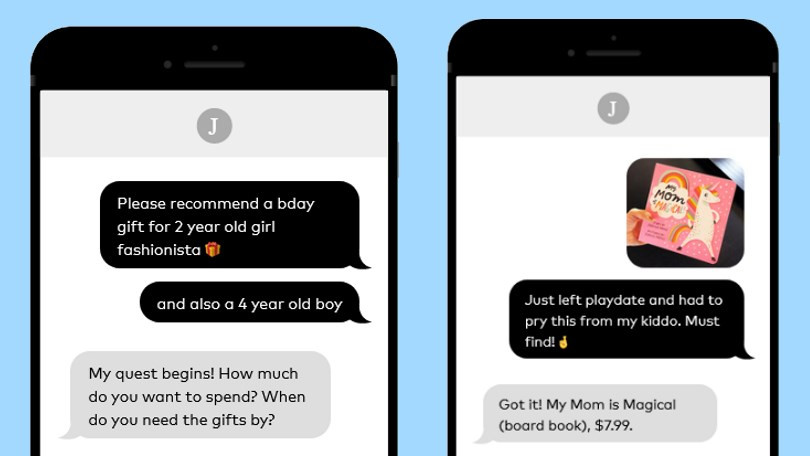
aerie
American Eagle’s lingerie brand aerie launched its chatbot on Facebook Messenger and Kik to help its customers find bras that fit well. Its target demographic is young women aged 15-25, so aerie knew that a chatbot was an ideal way to reach its young clientele.
Beyond simply helping young women shop for underwear, the chatbot also promotes body positivity and gives customers an opportunity to explore its #aerieReal campaign, which celebrates women of all shapes and sizes. And their chatbot strategy is working: Within weeks, aerie’s chatbot acquired more than double the average number of users the brand usually adds monthly on all social channels combined.

Macy’s
The legacy department store recently reinvented itself in the face of declining sales and store closings, and emerging technology has been a big part of Macy’s epic retail rebound. Earlier this year, Macy’s launched a skill for Amazon Alexa that allows customers to find nearby stores, get information on the Macy’s rewards program, and discover nearby events.
It even provides daily affirmations and wishes customers good morning. Features like these give shoppers a new channel to interact with the 159-year-old brand and allows Macy’s to offer the same sort of interactive experience as their younger competitors.Want to learn more about how chatbots are changing retail?
Download our report: Bots, Texts, and Voice: What Cuts Through the Clutter



Related posts





















